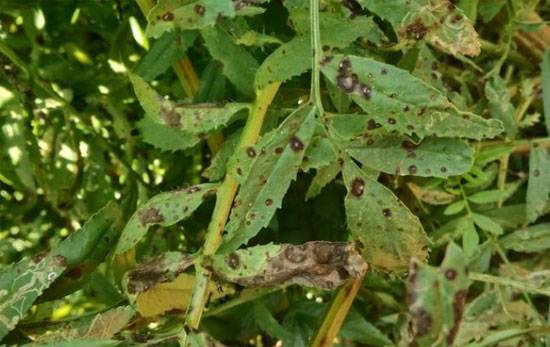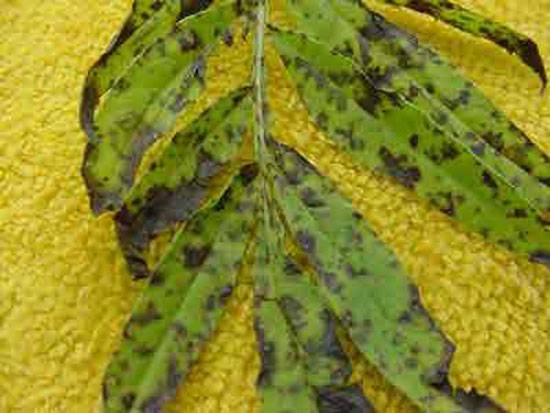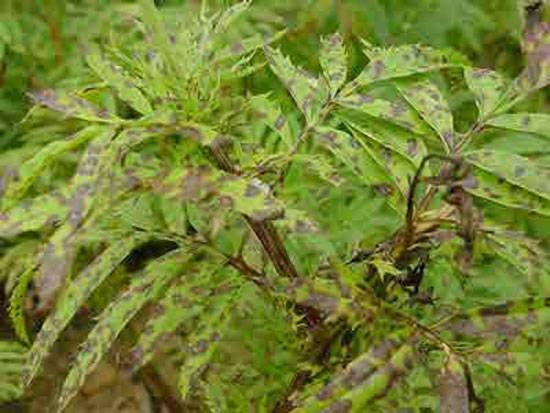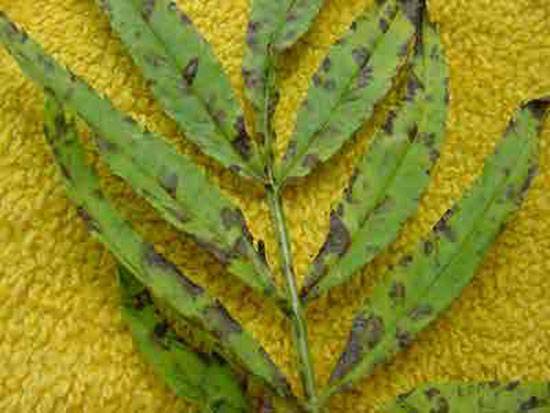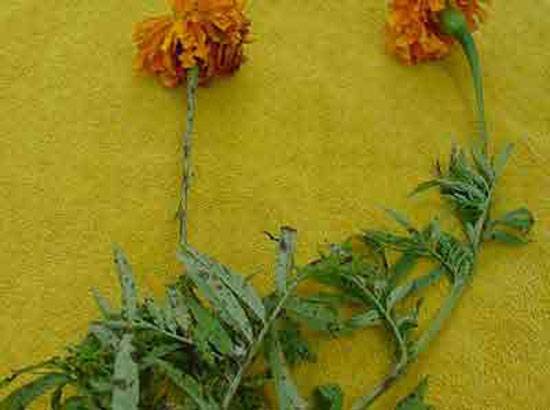Alternaria leaf spot, caused by different pathogens like Alternaria, Septoria, and Cercospora, is a common disease affecting marigolds. It leads to leaf damage and poor vegetative growth, impacting overall plant health and flower yield. Here’s a breakdown of the disease causes, symptoms, and management strategies:
1. Causal Organisms
- Alternaria species are parasitic fungi that survive on diseased crop debris through resting spores.
- Septoria and Cercospora also contribute to leaf spot issues in marigold.
2. Disease Cycle and Favorable Conditions
- Alternaria: Optimal spore production occurs at 20-30°C with high humidity (~87%). New infections thrive in 13-24°C, especially during wet periods.
- Cercospora: Grows best between 25-35°C, with night temperatures above 16°C and high humidity (90-95%). Leaf wetness above 11 hours promotes infection.
- Septoria: Prefers temperatures between 20-25°C. Infections usually begin on lower leaves, where humidity is highest.
3. Symptoms
- Circular to irregular tan to brown spots appear on leaves. These spots vary in size and color depending on the pathogen.
- Brown necrotic lesions enlarge, damaging the entire foliage, which leads to stunted growth.
4. Management
- Removing infected crop debris is essential to prevent spore survival.
- Regular spraying of fungicides helps in controlling the disease, particularly during favorable environmental conditions for the pathogens.
